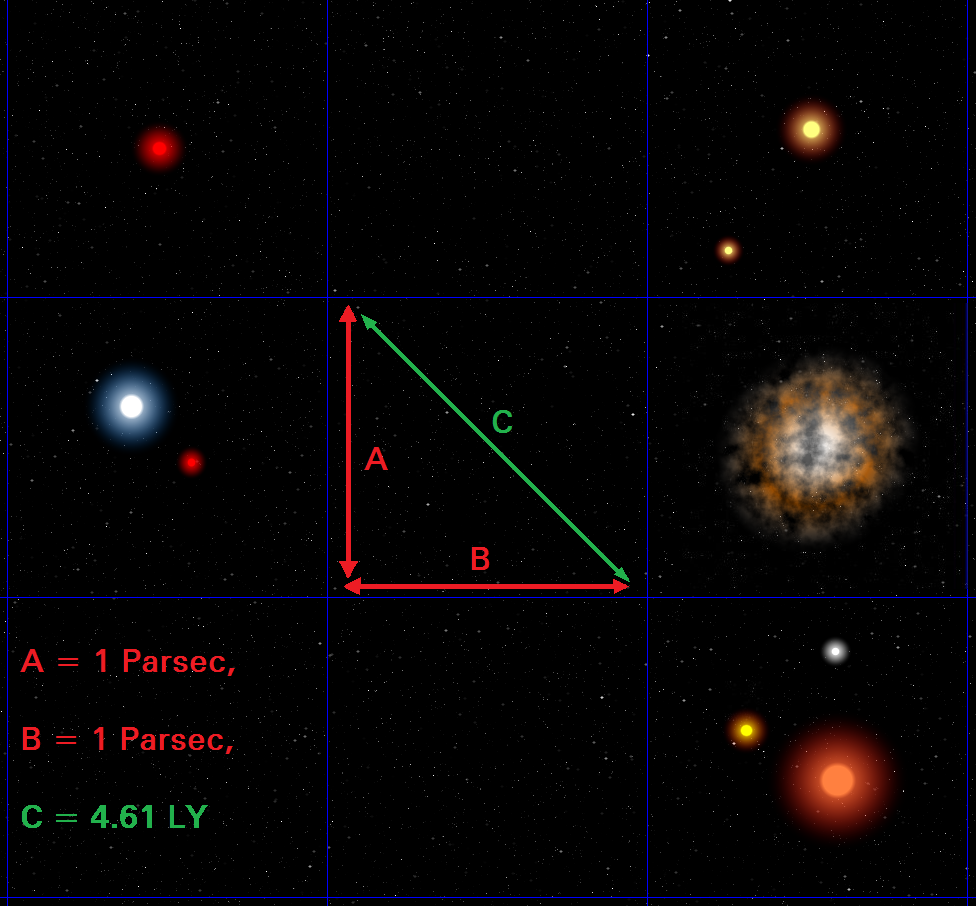Star System Mapping - Old School Hexes, New Approach?
 Terraformer_Author
Newcomer
Terraformer_Author
Newcomer
Ok guys, because I have no social life whatsoever to speak of, I'm lousy with relationships, and they haven't really came out with any good movies in like - a decade, I find myself with oh so much spare time on my hands. I was toying around with my graphics apps - and thinking about Winchell Chung's 3D Starmapping site / Project RHO ( http://projectrho.com/starmap.html ), and I came up with a rather interesting way to scale starmap hexes (I was trying to figure out if there could, maybe, be a way to get hex scales to reflect more closely how localized star systems are really oriented distance wise). Follow me on this - if you can decipher my insane ravings. Let's start by imagining a sqaure area in space - where each side is 1 parsec, or about 3.26 Light Years in width, and let's divide that sucker so that we've got a right triangle...



Comments
SEE - Now THIS is why I should dump the caffeine, back off of the sugar, and get out of the house more, lol.
Note how the span of two hexes besides each other is roughly equivalent to the area of 1 hex in value.
I call this the "OCD" technique of star mapping (Obsessive Compulsive Disorder)...
#1, It has been a Loooonngg time since college for me. #2, I had to round down a few ridiculously Loooooonnnnggg decimal values to get significant figures, and #3, this is a first draft notebook sketch of a process that likely needs refinement. Otherwise - it seems to be basically kosher from where I'm sitting. Also Jim P, you can google or yahoo up lot's of info on Hexagons bro - some of which is pretty darn cool. Those of you who would like to double check my math - God bless you - please do so! - Then - PLEASE get back to me with the corrections - your critique is not only welcome - it's needed! Consider this yet another odd community effort to integrate elements of real world data with game mechanics (in this case - maps).
It should be noted that when shooting along the red and purple axis (the directions with no hexes) in the above diagram 2 hexes distance equals about 4.33 LY, but when shooting along the greens (the hex facings) 2 hexes equals about 4.62 LY. In regard to this... Now that you know the distances of all of the measurements in the hex, would it be possible to create a 2d hex map that accurately represented the distances? You know the distance from Sol to each other star system, so therefore if you also knew the distance from each star system to each other star system, you might be able to come up with an arrangement that came close to mapping out the 3d space.
Though it might require some serious math to work out.
Example: Wolf 359 is 7.7 LY from Earth. Assuming it's at the center of a hex, Wolf 359 should be slightly more than 3 hex trip from earth. Since it's nice to have everything at center of a hex, perhaps 2 hexes one direction, 1 hex another.
Of course then you have to start thinking about other stars position in relation to each other, that's where the math gets really complex... When you go to place... say DX Canceri, you have to take into account it's distance from earth, and it's distance from Wolf 359. It must be possible to get a rough idea of stars distance from each other, but I can't find any handy reference out there on the internet.
Sorry, that's all I got.
ANYWAY - I think that I'm going to re-calculate this thing using the value of 3.26156376 LY for the parsec, because I just found an old astronomy folder in my personal library of things that are totally pointless for everyday life, that has a really nice proof in it that is based upon the SI value of the light year (9.46073047 x 10^15 m). To get 1 Parsec in LY, you divide 1 A.U. (1.49597870 x 10^11 m) by 1 LY, and then multiply the result by 206,264.806. There are 180.0 x 60.0 x 60.0 arc seconds in 180.0 degrees - and the ratio of 180 degrees in arc seconds to PI is 206,264.806. OH CRAP - ANOTHER NOSEBLEED!!!! Scuze ' me while I snag a bottle of aspirin and some kleenex, lol.